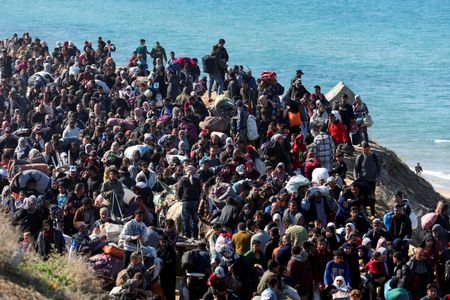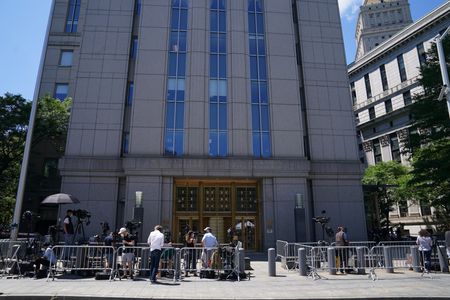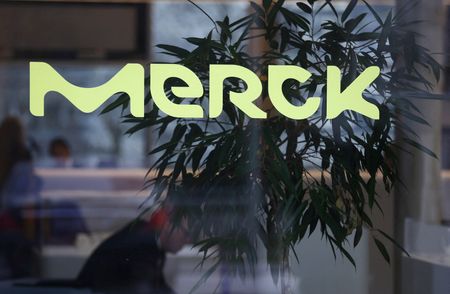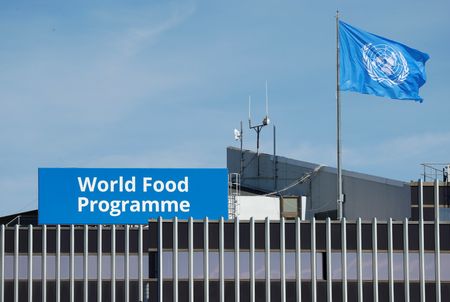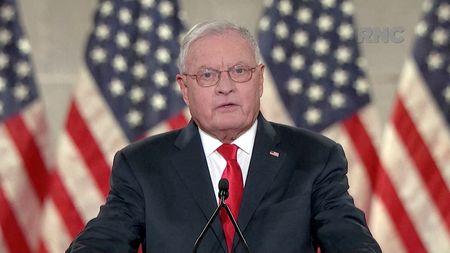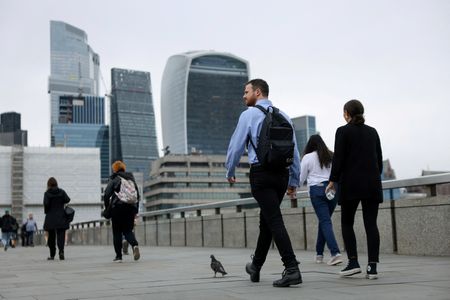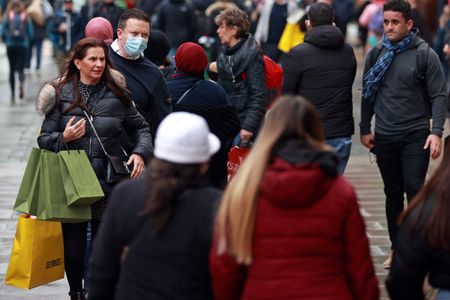By Philip Blenkinsop
BRUSSELS (Reuters) – U.S. President Donald Trump has said he will impose tariffs on imports of steel and aluminium and raise rates to match those of other countries in the coming week.
The United States and European Union have the world’s largest commercial relationship, trading 1.5 trillion euros ($1.55 trillion) of goods and services in 2023.
European Commission president Ursula von der Leyen said last week the EU would “respond firmly” if targeted unfairly or arbitrarily. Here is the EU’s possible course of action.
RETALIATORY TARIFFS
In 2018, after Trump imposed tariffs on 6.4 billion euros of EU steel and aluminium imports, the EU hit back with its own duties on 2.8 billion euros of U.S. products. Tariffs on a further 3.6 billion euros of U.S. imports were due to take effect three years later, but were not imposed after Joe Biden became U.S. president and the two sides agreed a truce.
The EU tariffs targeted U.S. steel and aluminium, but also products concentrated in states that had voted for Trump, such as bourbon whiskey from Kentucky, motorcycles from Wisconsin-based Harley Davidson and orange juice from Florida.
The EU could adopt a similar strategy of “rebalancing” measures this time as well, although Washington has more to target than Brussels. U.S. goods imports into the EU totalled 347 billion euros in 2023, against 503 billion euros of exports, according to EU statistics agency Eurostat.
ANTI-COERCION INSTRUMENT
The EU’s Anti-Coercion Instrument (ACI), which came into force at the end of 2023, allows the bloc to retaliate against third countries that put economic pressure on EU members to change their policies, and offers far wider scope for action.
As well as imposing goods tariffs, the EU can limit access to public procurement tenders for companies from a third country or take action affecting services trade or investment.
While the United States has a trade deficit with the EU in goods, it has a surplus in services trade, including digital services provided by the likes of Amazon, Microsoft, Netflix or Uber.
The EU can also restrict protection of intellectual property rights, limit financial service companies’ access to EU markets and curb companies’ ability to place chemicals and agri-food products in the EU.
The ACI was proposed in 2021 as a response to EU member criticism that the first Trump administration and China used trade as a political tool. China had targeted Lithuania, according to Lithuania officials, after it allowed Taiwan to set up a de facto embassy in Vilnius.
The law gives the Commission up to four months to examine possible cases of coercion and to propose courses of action to EU members, which have about another two months to approve them. The Commission can pause any measures for six months as it seeks to find a diplomatic solution.
BIG TECH
Beyond formal trade policy, the European Union has a number of routes to curb the activities of large U.S. tech firms, many of whose CEOs had prime seats at Trump’s inauguration.
The EU has ongoing investigations against Apple, Alphabet, X and Meta under its Digital Markets Act (DMA), which imposes antitrust obligations, and the Digital Services Act (DSA), which covers content moderation.
It is also likely to add Amazon to the list, Reuters has reported.
The DMA foresees fines of up to 10% of global turnover or 20% for repeat offences. For the DSA, the maximum fine is 6% of turnover.
Meta Chief Mark Zuckerberg has called on Trump to stop the EU from fining U.S. tech firms. Trump ally Elon Musk has repeatedly clashed with EU regulators.
Another avenue is to tax digital service providers. The EU suspended work on a Digital Services Tax to allow a broader solution to be found at the Organisation for Economic Cooperation and Development (OECD), which published a draft multilateral treaty in 2023 that has yet to be finalised.
A number of EU countries, such as France, do have digital services taxes. Trump in his first term responded with tariffs, which were then suspended by Biden.
($1 = 0.9695 euros)
(Reporting by Philip Blenkinsop; Additional reporting by Leigh Thomas in Paris; Editing by Peter Graff)


